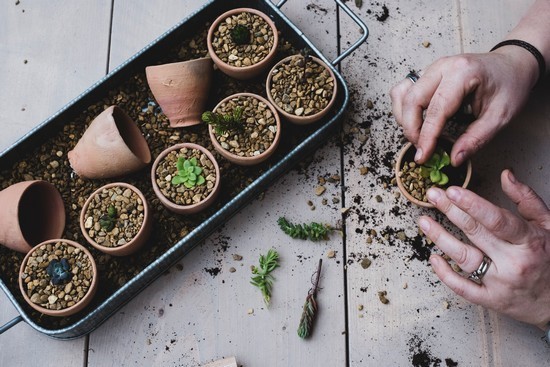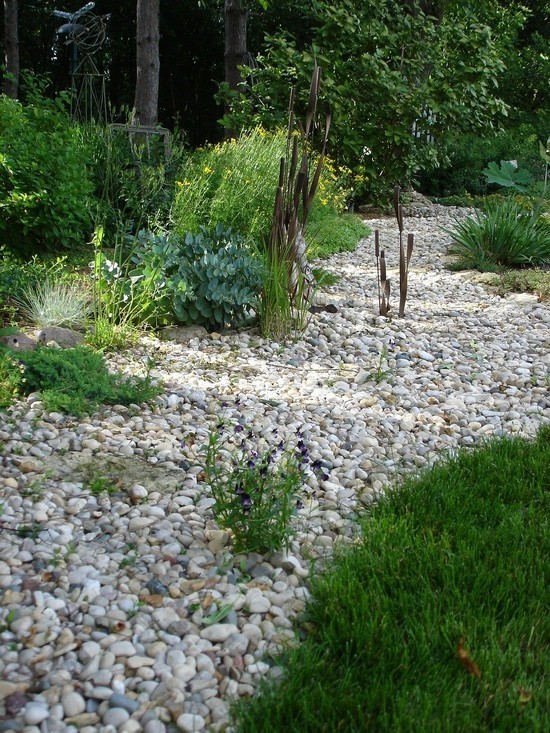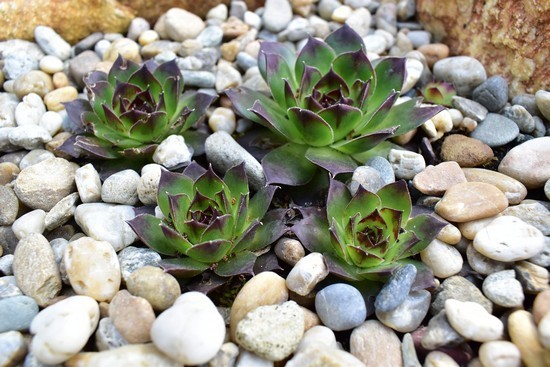The phrase “gravel garden” didn’t resonate
with Jeff Epping, although he’s a leading proponent of adopting this planting
style, which is beautiful and exceptionally resilient.
اضافة اعلان
“I’ve never liked the name, because it just doesn’t
conjure the look of what’s possible,” said Epping, director of horticulture at
Olbrich Botanical Gardens, in Madison, Wisconsin, where he created his first
gravel garden in 2009 and has planted three more since.
In the way that rock
gardens are not all about the
rocks, he said, gravel is not the lead character here, either. Rather, it plays
an essential supporting role. The plants — in his case, mostly native grasses and
flowering perennials evocative of natural prairie plant communities — do the
showing off.
“When I tell people about gravel gardening without
them seeing it, they might say, ‘Oh, that sounds like it might be
interesting,’” Epping said. “But then they see the images and express surprise
that it’s as beautiful as any garden.”
Then he adds a kicker: A gravel garden could be 80
percent less work to maintain than a conventional garden with similar plants.
That’s how converts are made.
 (Photo: Envato Elements)
(Photo: Envato Elements)
It is precisely because of the
gravel that upkeep is
so drastically reduced. This is no mere top-dressing — not a mulch layer, but a
deliberate foundation 10 to 12 centimeters deep into which the garden is
planted. That depth discourages weeds from finding a foothold, while minimizing
runoff, directing available water to where roots can use it.
Caring for an established gravel garden requires
even less attention week to week than taking care of a lawn, which “might as
well be a parking lot, as far as the garden’s creatures go,” Epping said.
He turned the grassy stretch in front of his home
into a water-wise gravel garden in 2018. And now the time he once spent mowing
is devoted to watching bees, butterflies, or a goldfinch nibbling at a
Coreopsis seed head.
A chain of inspiration
On visits to English gardens
over the years, Epping had seen gravel gardening brought to life, particularly
in the transformed parking area that welcomes visitors to the nursery and
gardens made by
Beth Chatto, in the county of Essex. The cottage at Dungeness
that belonged to artist Derek Jarman is another well-known example.
For a time,
Epping filed all of that away. It wasn’t until he saw a smaller-scale version
by Roy Diblik, at Northwind Perennial Farm in Burlington, Wisconsin, that he
felt called to action. And Diblik — inspired by the same images, as well as a
visit to German designer Cassian Schmidt’s garden, Hermannshof — helped Epping
make Olbrich’s first gravel garden.
 (Photos: Pixabay)
(Photos: Pixabay)
Several states away,
Andrew Bunting, vice president
of public gardens and landscapes for the Pennsylvania Horticultural Society,
had the same frames of reference, including Epping’s work. He had enjoyed years
of regular visits to the gravel garden at Chanticleer Garden in Wayne,
Pennsylvania, not far from his Swarthmore home.
For him, the trigger that turned those inspirations
into action was the pandemic.
Bunting found himself at home in 2020 in what became
his “
COVID office,” looking out at his “meadow-ish front garden” day after day,
he said, from his seat at the dining table. “I remember thinking, ‘This is
tired; it needs redoing.’”
Another factor in his decision was the presence of
two tenacious weeds, lesser celandine (Ficaria verna) and star of
Bethlehem(Ornithogalum umbellatum). Could they be subdued for good by the gravel method?
Making a bed, with gravel
A good gravel garden site is
level or a gentle slope, and has decent drainage. Although the classic images
are of sunny spots, that is not a requirement.
At Epping’s home, for instance, in shade cast by a
big oak, white wood aster (Eurybia divaricata) and the big-leaved aster (E.
macrophylla), both natives, grow in the gravel. The blue-stemmed goldenrod
(Solidago caesia) is happy, too, as are sedges (Carex) and even nonnative shade
standards such as Epimedium and Hosta.
All the
preparatory steps are about keeping any soil below the gravel, to avoid
creating invitations for weed seeds to take hold. The engineering is a little
like building a raised bed — although you don’t have to actually raise it, you
do have to excavate the topsoil layer to make room for that 10–12cm gravel
base.
As in a raised
bed, what is required is a perimeter barrier — in this case, about 15cm high —
to contain the gravel at a consistent depth throughout. Otherwise, pebbles near
the edges would naturally spread out, and the thinner layer of gravel would
invite weeds to self-sow.
Any solid edging
material — curbstones, bricks, concrete pavers, or even found stones — can be
employed. (
Wood would also work, but it will eventually rot.) An adjacent house
foundation, sidewalk or stone wall could form part of the enclosure.
Before Bunting began his garden makeover, he had an
excavating contractor scrape away the top layer of soil — so the new garden
would be level with an existing walkway — and then bring in the gravel. Whether
you excavate or not, to make your site gravel-ready, you must remove most of
the existing vegetation. A tree or shrub can remain as long as the soil is
teased away from its crown and upper root area, which will be topped with
stone.
 (Photos: Pixabay)
(Photos: Pixabay)
At planting time, pint- or quart-size plants are
ideal, Epping said, because their root systems are about as deep as the gravel.
Plants that work
Multiple seasons of visual
interest and an adaptability to dry conditions are two qualities Epping seeks
in plant choices.
Bunting also wanted to try some marginally hardy
ones: Western prickly pear cactus hybrids (Opuntia) or South African species
such as ice plant (Delosperma) and Aloe polyphylla, which he called “a real
long shot.”
His hope? That they may prove extra winter proof if
their “feet” stay dry in the gravel base, rather than in icy, mucky puddles.
Native plants of the American prairie fit Epping’s
requirements. He is especially fond of pale-purple coneflower (Echinacea
pallida), prairie baby’s breath (Euphorbia corollata), foxglove beardtongue
(Penstemon digitalis) and prairie coreopsis (Coreposis palmata).
A minimum of maintenance
The don’t-need-to-do list
for gravel gardens is not just about reduced weeding and watering duties. These
are gardens that don’t require mulching or fertilizing either, and their edges
are already defined, so they needn’t be cut each spring the way you would with
a conventional bed adjacent to lawn.
The essential routine: a late-winter or early-spring
cleanup. All the herbaceous plants are cut back, and the debris carefully
removed, lest that organic matter break down to form a weed-inviting medium.
A leaf blower is helpful, for that big cleanup
moment and whenever fading bits of plants find their way onto the gravel
surface — under trees, for example, where blooms or foliage have fallen.
Do you dare to allow some plants to have their own
way? Bunting intends to experiment with some self-sowns. And Epping is
dabbling, adding sandy pockets here and there to allow volunteers — “fooling
around a little,” as he put it, “with some small experiments.”
Gravel makes for a different kind of garden, one
that invites such creativity but involves a learning curve, even for
experienced horticulturists.
“I fully admit I
am not an expert at this, which is actually kind of fun,” Bunting said. “I feel
like a beginning gardener again in the gravel garden.”
Read more Lifestyle



